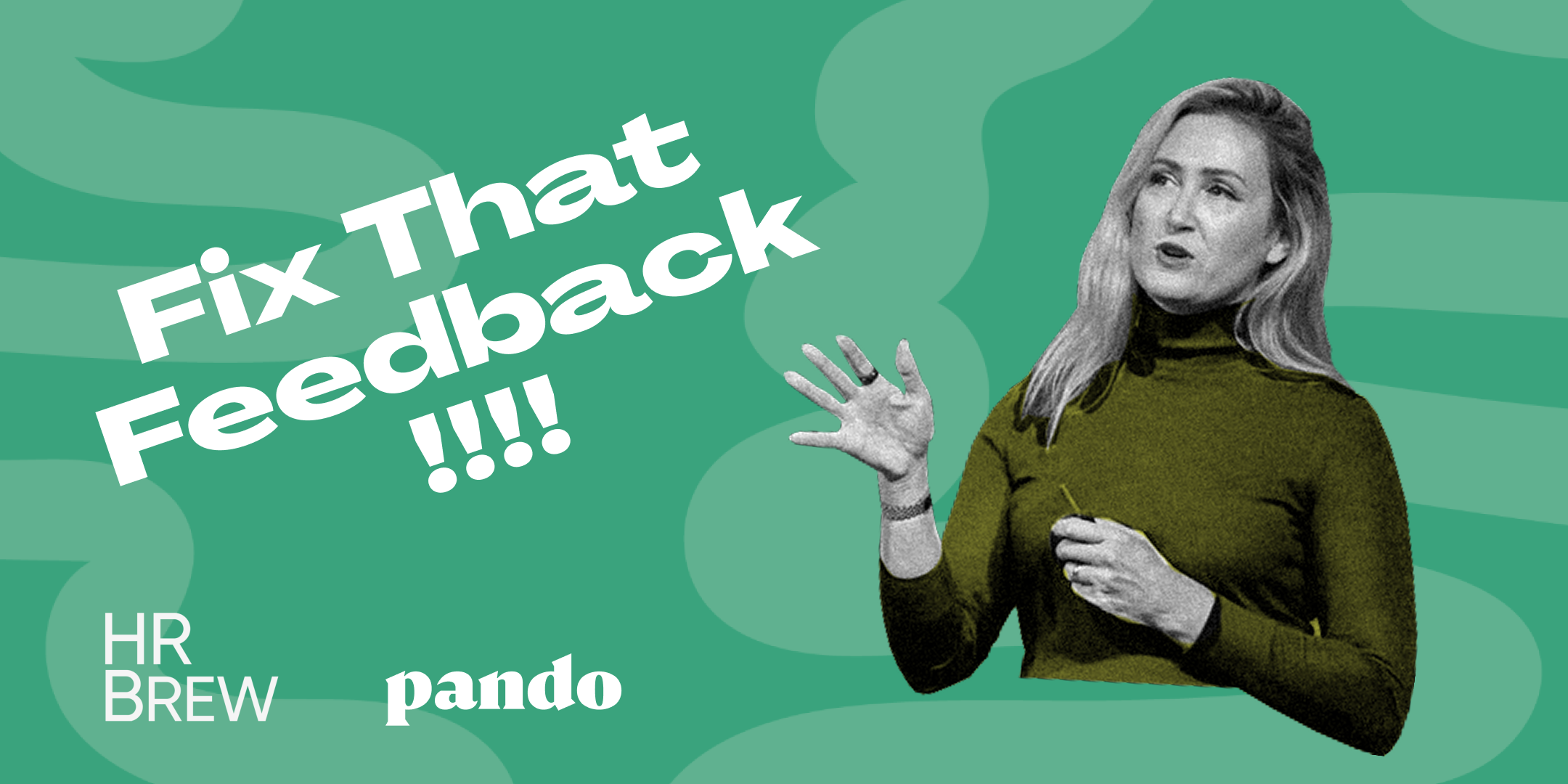
In a recent episode of the People Person podcast, Kate Noel from HR Brew challenged Pando CEO Barbra Gago to a lightning round of “Fix That Feedback.” The premise: take common examples of bad feedback and make them better–turning vague, unhelpful comments into constructive coaching moments.
Here are the three common feedback fails and how Barbra recommends fixing them.
❌ The problem:
This feedback focuses on the behavior but ignores the impact. It’s vague, subjective, and offers no actionable next step. The person hearing it might feel blamed or shamed without knowing how to improve.
✅ The fix: Use a framework like SBI — Situation, Behavior, Impact.
Barbra suggests reframing feedback with context and consequence. For example, “In last week’s strategy meeting with the product team [the situation], you didn’t share your perspective on X, even though you had valuable insight [the behavior] on how we came to our conclusions. As a result [the impact], the team lacks trust in our recommended approach which will cause friction and delays for the product release.”
This makes feedback specific, situational, and anchored in the impact is has on the business, turning criticism into clarity.
❌ The problem:
A classic red flag (of a manager that needs some feedback training!). This feedback is ambiguous, emotionally loaded, and potentially (probably) biased. “Not a cultural fit” can mean anything from style differences, misaligned values, how people treat others, or their mindset. Telling someone they are "not a culture fit" leaves employees confused and demoralized.
✅ The fix: Anchor feedback in defined company values.
Instead of blanket statements, tie observations to specific, observable behaviors explicit in how you define and talk about your values. Rather than simply listing the word and definition of the value, include a list of behaviors that represent this value (or anti-behaviors) so it's easy for managers and employees to recongnize and align more easily.
For example, a Manager could say, “One of our values is ‘Challenge Directly and Care Deeply.’ I’ve noticed in team discussions you tend to avoid voicing disagreements, even when you have strong ideas. Let’s work on finding ways to express your point of view more comfortably.”
This transforms the seemingly black or white “culture fit/not a culture fit” into more nuanced discussion around cultural alignment which can be demonstrable, fair, and actionable.
❌ The problem:
On the surface, it sounds positive. But it’s actually unhelpful — it gives no direction, no reinforcement of what’s working, and no path for growth. Without simple structures and frameworks for feedback, you often see this kind of "kudos" based feedback that leans heavily into ambiguity and positivity (and ultimately comes off as lazy).
✅ The fix: Try the "Start–Stop–Continue" framework.
Barbra recommends this simple tool for balanced, actionable feedback, for example: “Start sharing your progress updates in the weekly standup — it helps the team stay aligned. Stop multitasking during 1:1s so we can stay focused. Continue mentoring new team members — they’ve shared great feedback about your support.”
Now the employee knows exactly what behaviors to work on, stop, and sustain.
“Feedback should always be clear, contextual, and connected to impact.”
Whether it’s constructive or positive, feedback is only valuable if it helps someone understand why it matters and how to act on it. And as Barbra points out, tools like AI can even help managers structure that feedback more effectively — not by writing it for them, but by coaching them through it.
The next time you’re coaching managers through performance conversations, remember: clarity is kindness. Frameworks like SBI and Start–Stop–Continue don’t just make feedback easier—they make it fairer, more human, and more effective.
Want to hear more about this? Check out The People Person Podcast here: Apple, Spotify, Youtube "Perfecting the Performance Review with Barbra Gago, Founder & CEO of Pando"
